We tested another low-cost SSD, the Kingston A400 120 GiB. Let’s see how does it perform against its competitors. Check it out!
Recently, we tested four 120 GiB new-generation entry SSDs: the WD Green, the Corsair Force LE, the Kingston SSDNow UV400, and the SanDisk SSD Plus, which are some of the most inexpensive SSDs available today. Now we are including a new inexpensive SSD: the Kingston A400 120 GiB.
Just like most new SSDs, the A400 uses TLC (triple level cell) memories. This kind of memory stores not two, but three bits per cell. It allows a higher data density and, thus, a smaller manufacturing cost for a same capacity chip.
The bigger issue with TLC memory chips, compared to the two-bit MLC chips (and even more compared to the SLC memory chip, that store only one bit per cell) is the shorter lifespan, because there is more cell wearing on the erasing process (executed before writing new data).
The TBW, which stands for total bytes written, meaning the amount of data written on the drive before it begin to experience tearing problems. Obviously, typical TBW values are very high number and must not worry home users, but it makes this model inadvisable for applications that need a big amount of data writing, like servers or workstations for working with raw video files, for example.
In the table below, we compared the tested units. All of them use SATA-600 interface and the 2.5” form factor, with 7 mm height.
[amazon box=”B01N6JQS8C” template=”table”]
| Model | Manufacturer | Model # |
| A400 | Kingston | SA400S37/120G |
| WD Green | Western Digital | WDS120G1G0A |
| Force LE | Corsair | CSSD-F120GBLEB |
| Now UV400 | KingstonSSD | SUV400S37/120G |
| SSD PLUS | SanDisk | SDSSDA-120G |
| Nominal capacity | Price |
| 120 GiB | USD 48 |
| 120 GiB | USD 55 |
| 120 GiB | USD 50 |
| 120 GiB | USD 41 |
| 120 GiB | USD 45 |
In the table below, we compared technical specs of the tested drives.
| Model | Controller | Buffer |
| Kingston A400 | Phison S11 | – |
| WD Green | Silicon Motion SM2258XT | – |
| Corsair Force LE | Phison PS3110-S10C-12 | 256 MiB Nanya NT5CC128M16IP-DI |
| Kingston SSDNow UV400 | Marvell 88SS1074 | 256 MiB Nanya NT5CC128M16FP-DI |
| SanDisk SSD PLUS | Silicon Motion SM2246XT | – |
| Memory | TBW |
| 4x 32 GiB Kingston FH32B08UCT1-OC | 40 TiB |
| 4x 32 GiB SanDisk 05497 032G | 40 TiB |
| 4x 32 GiB Toshiba TT58G51ARA | 30 TiB |
| 8x 16 GiB Kingston FT16B08UCT1-0F | 50 TiB |
| 2x 64 GiB SanDisk 05446 064G | N/A |
Figure 1 shows the box of the Kingston A400 120 GiB.
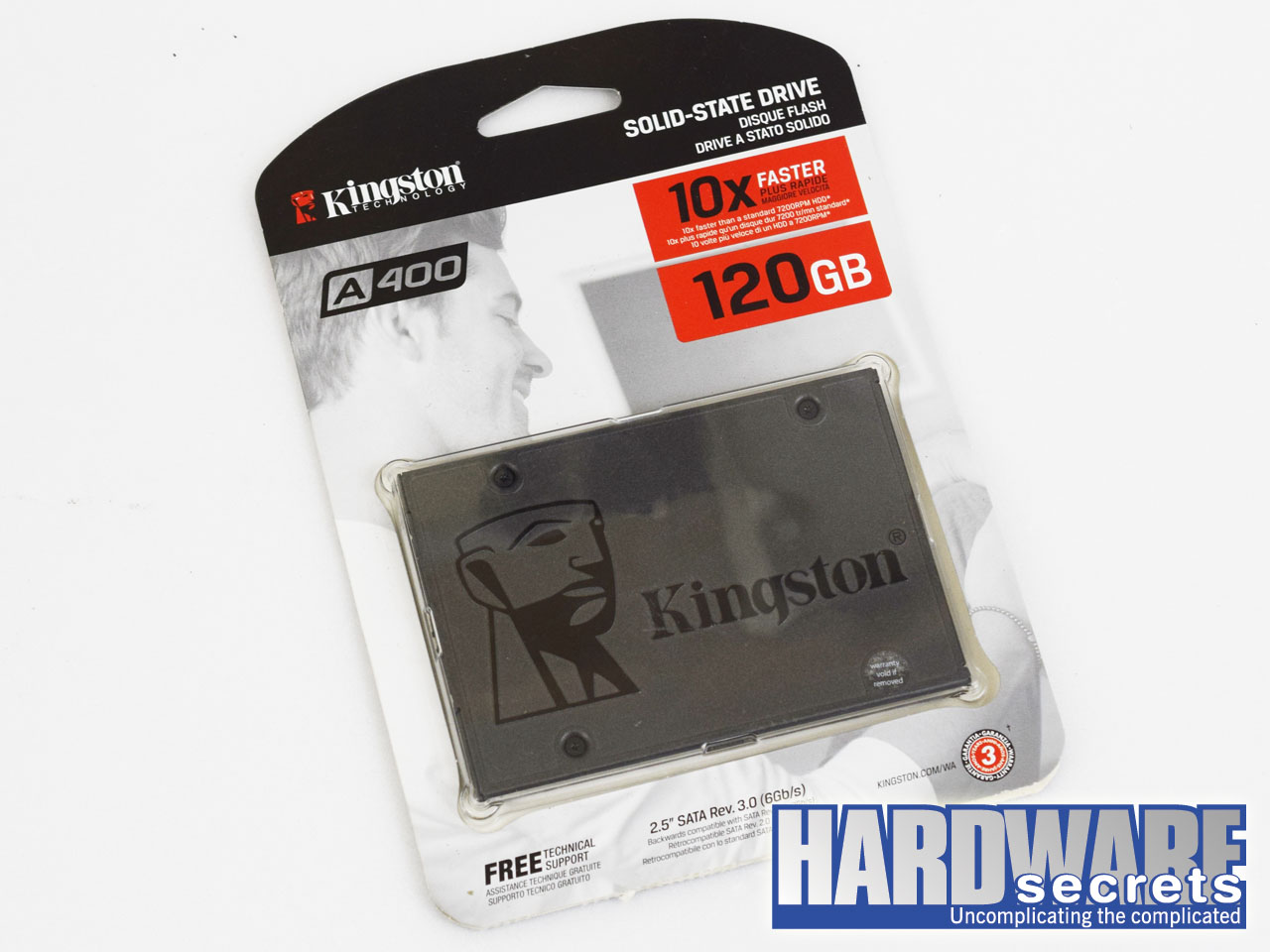
Figure 1: The Kingston A400 120 GiB package
On Figure 2, we see the Kingston A400 120 GiB, which has an aluminum casing.
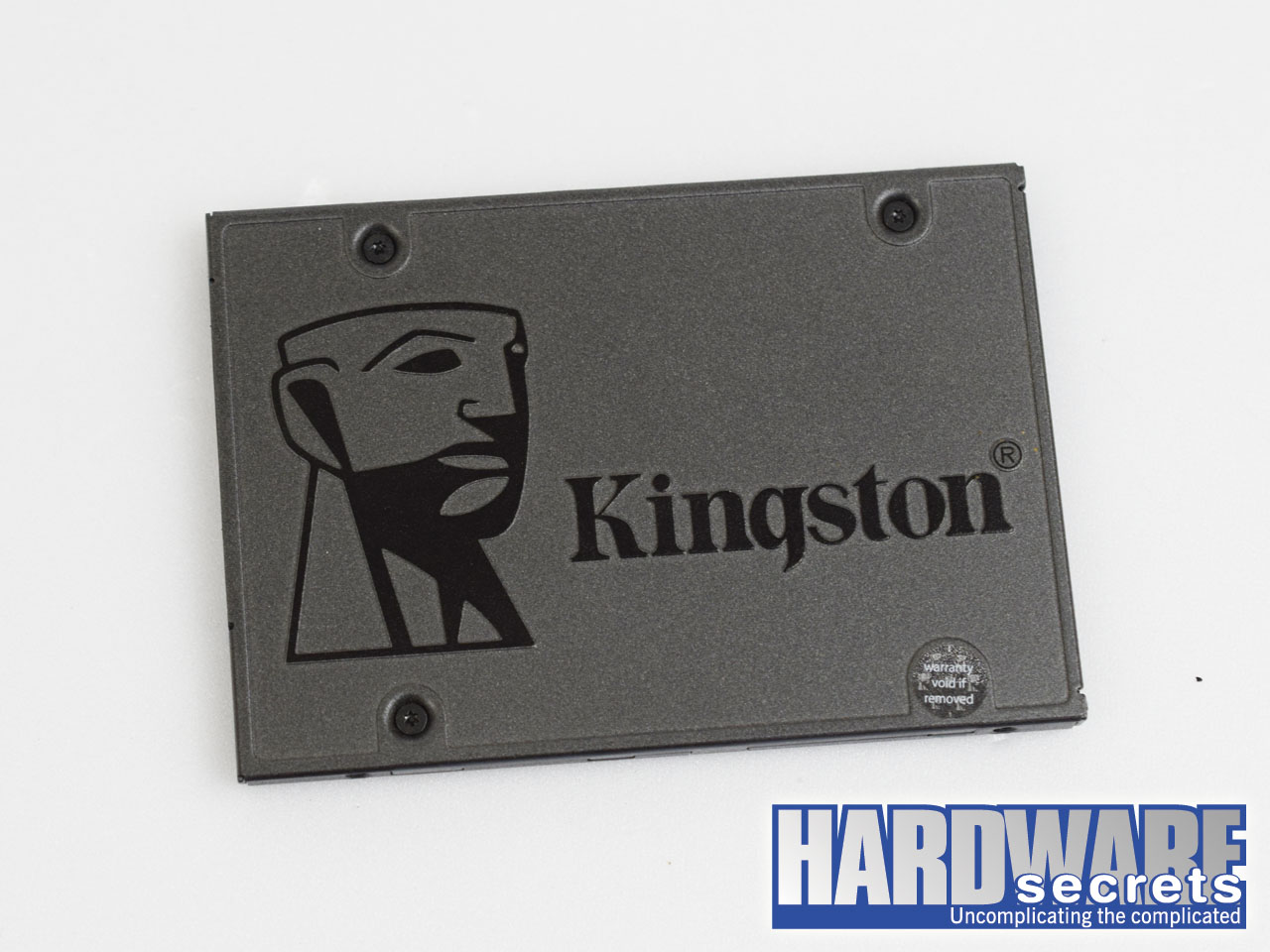
Figure 2: the Kingston A400 120 GiB
On the bottom of the drive, there is a sticker with unit info, as seen in Figure 3.
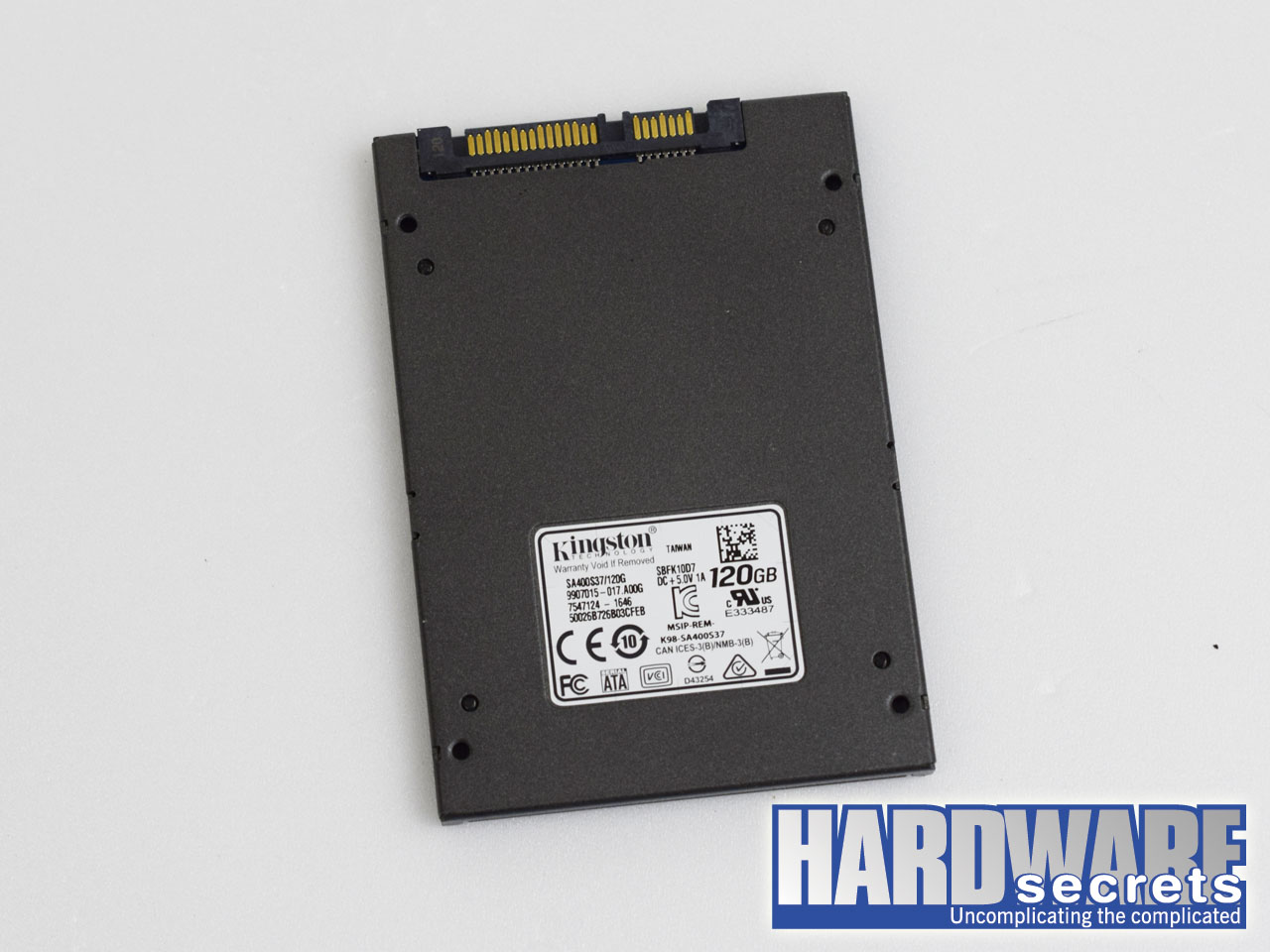
Figure 3: bottom side
Opening the Kingston A400, we see the small PCB. At the solder side, there are two flash memory chips.
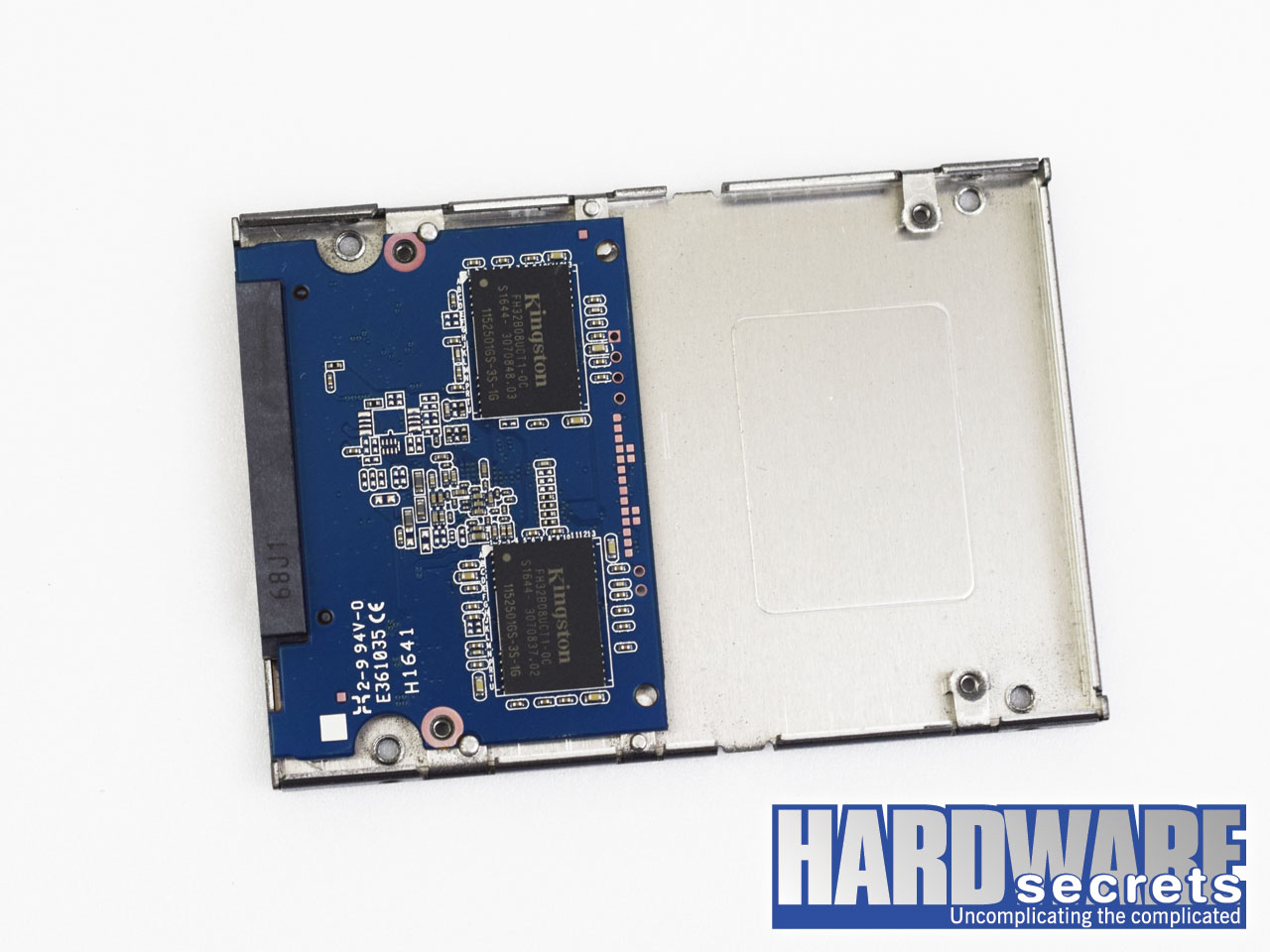
Figure 4: solder side of the PCB
At the component side, we see two flash memory chips and the controller chip. There is no cache memory.
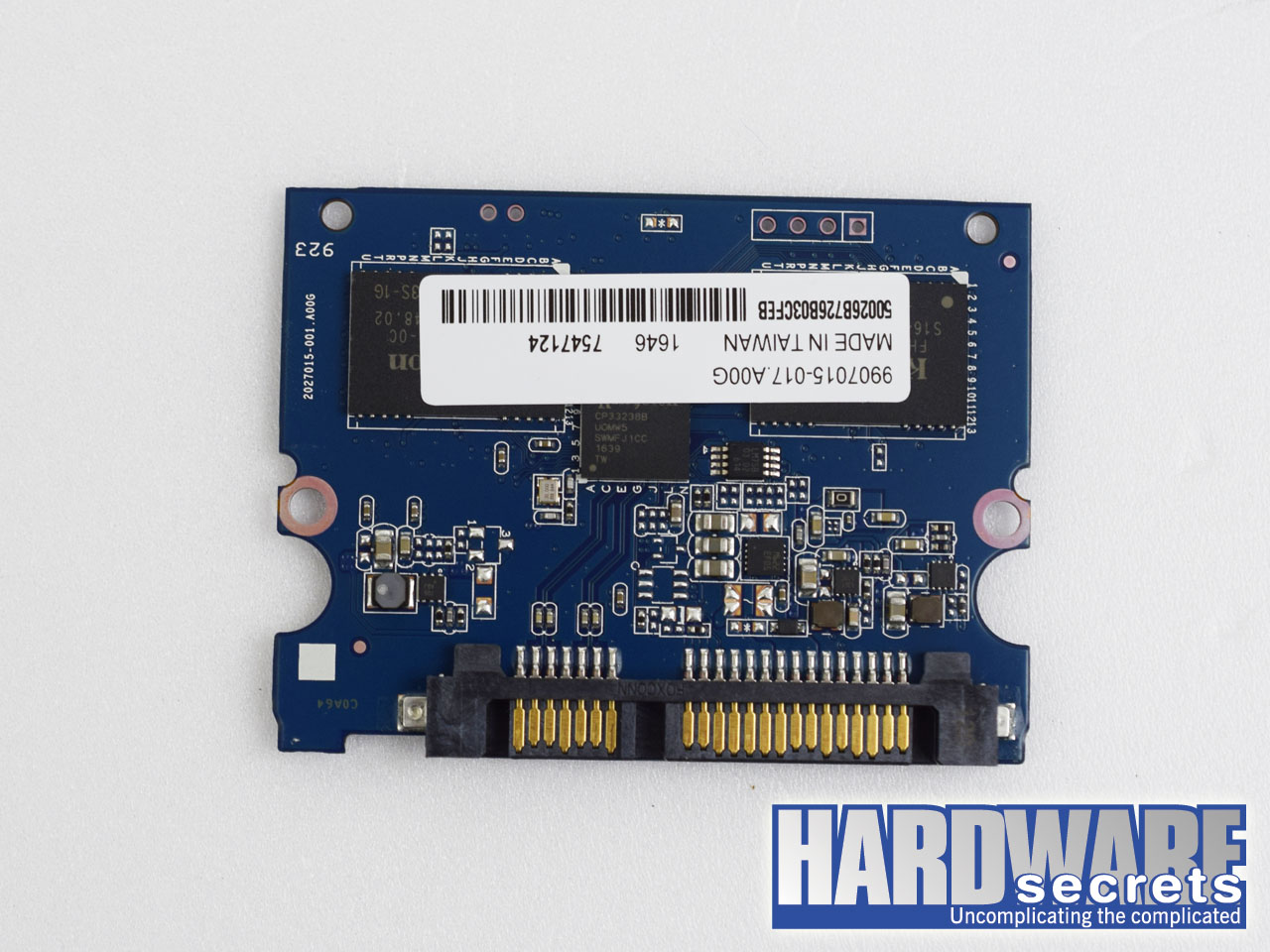
Figure 5: component side of the PCB
The controller used by the Kingston A400 120 GiB is the Phison S11, labeled as Kingston CP33238B, presented in Figure 6.
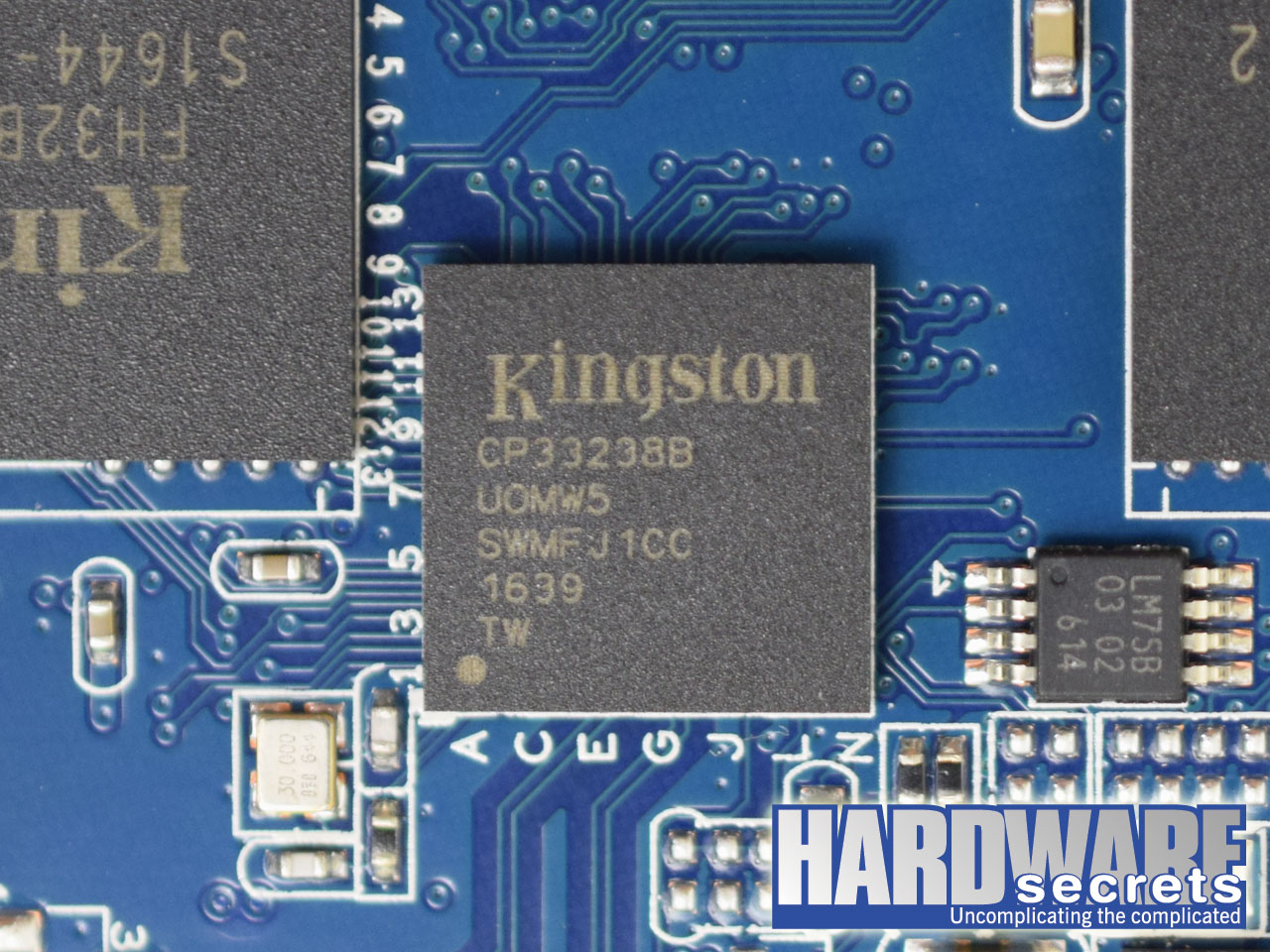
Figure 6: controller chip
The flash memory chips are Toshiba 2D Planar 15 nm NAND, labeled as Kingston FH32B08UCT1-OC.
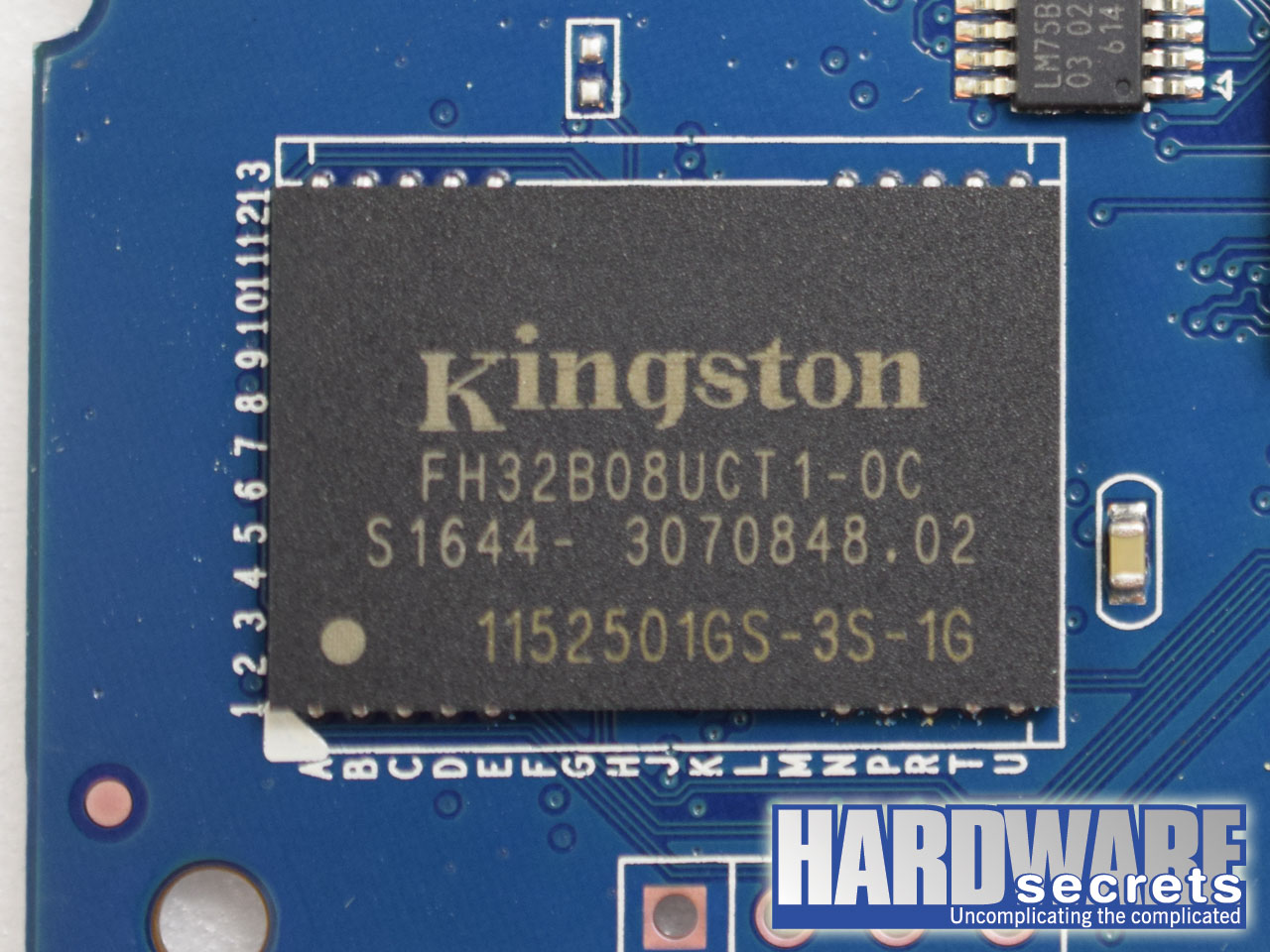
Figure 7: flash memory chip
During our testing procedures, we used the configuration listed below. The only variable component between each benchmarking session was the SSD being tested.
Hardware configuration
- Processor: Core i7-6950X @ 3.8 GHz
- Motherboard: ASRock Fatal1ty X99 Extreme6/3.1
- Memory: 64 GiB DDR4-3000, four HyperX Predator 16 GiB modules
- Boot drive: Kingston HyperX Predator 480 GiB
- Video display: Samsung U28D590D
- Power Supply: Corsair CX750
- Case: Thermaltake Core P3
Software Configuration
- Operating System: Windows 10 Home
Benchmarking Software
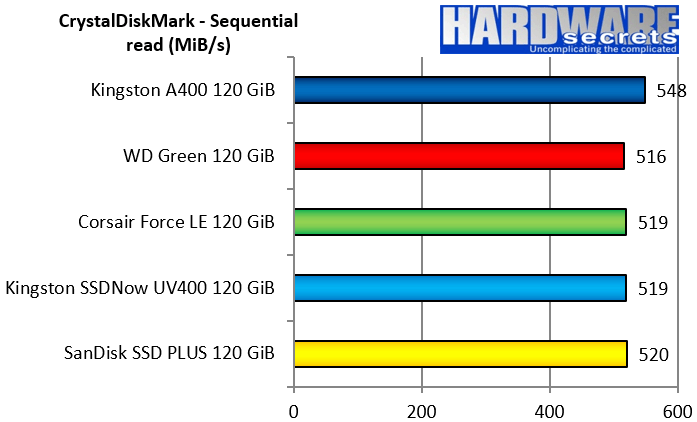
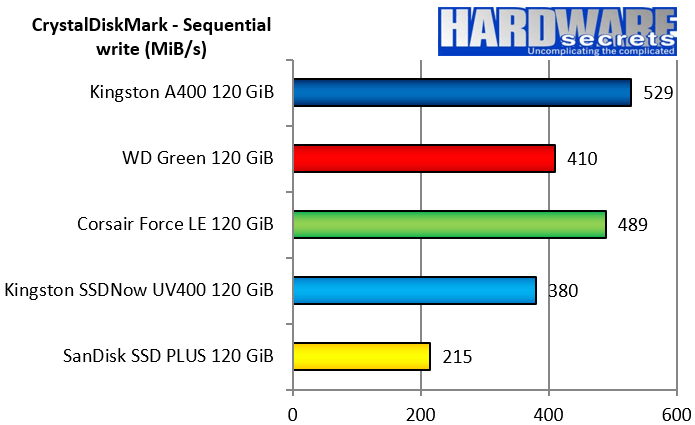
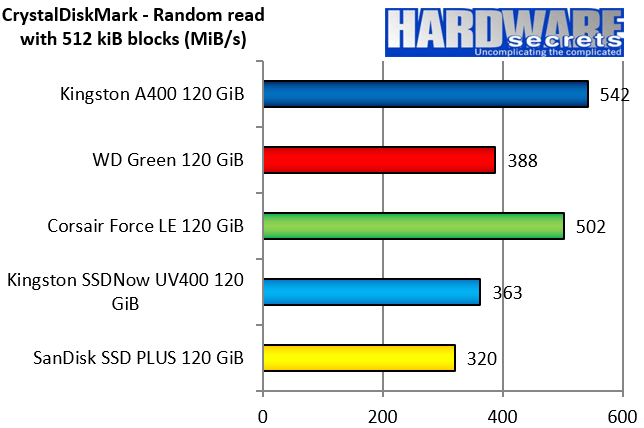
Error Margin We adopted a 3% error margin in our tests, meaning performance differences of less than 3% cannot be considered meaningful. Therefore, when the performance difference between two products is less than 3%, we consider them to have similar performance.
As you will have gathered from the previous page, we measured the performance of each drive using CrystalDiskMark.
It is important to note that we connected the SSDs to a SATA-600 port on our motherboard rather than a SATA-300 port, which could cause performance limitations.
First, we set CrystalDiskMark to “All 0x00 Fill mode” to evaluate the performance of the SSD when dealing with compressible data.
On the sequential read benchmark, the Kingston A400 was 6% faster than all the other models.
On the sequential write benchmark, the Kingston A400 was 19% faster than the WD Green, 8% faster than the Corsair Force LE, 39% faster than the Kingston SSDNow UV400, and 146% faster than the SanDisk SSD Plus.
On the random read test with 512 kiB blocks,the Kingston A400 was 40% faster than the WD Green, 8% faster than the Corsair Force LE, 49% faster than the Kingston SSDNow UV400, and 69% faster than the SanDisk SSD Plus.
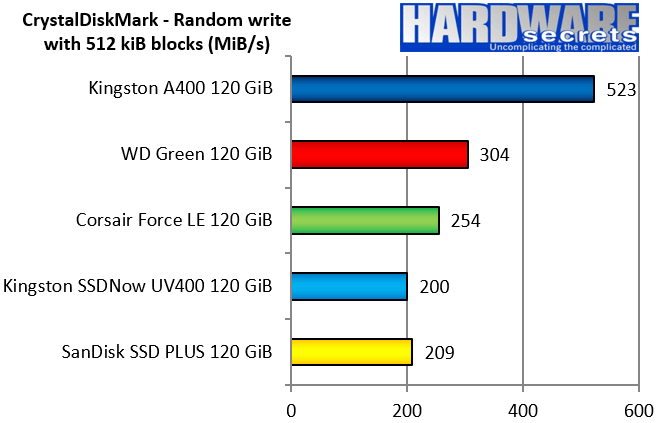
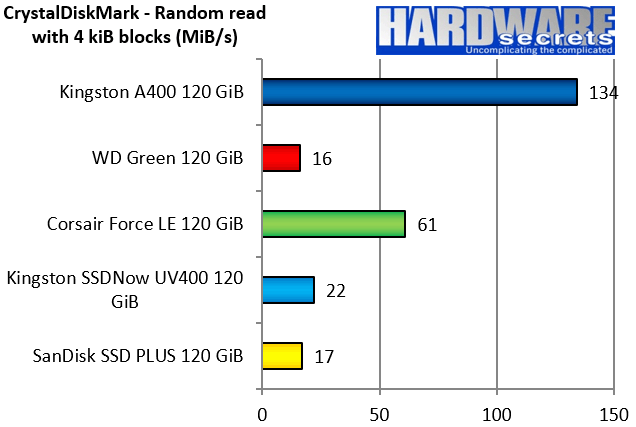
On the random write test with 512 kiB blocks, the Kingston A400 was 72% faster than the WD Green, 106% faster than the Corsair Force LE, 162% faster than the Kingston SSDNow UV400, and 152% faster than the SanDisk SSD Plus.
On the random read benchmark with 4 kiB blocks, the Kingston A400 was 738% faster than the WD Green, 120% faster than the Corsair Force LE, 509% faster than the Kingston SSDNow UV400, and 688% faster than the SanDisk SSD Plus.
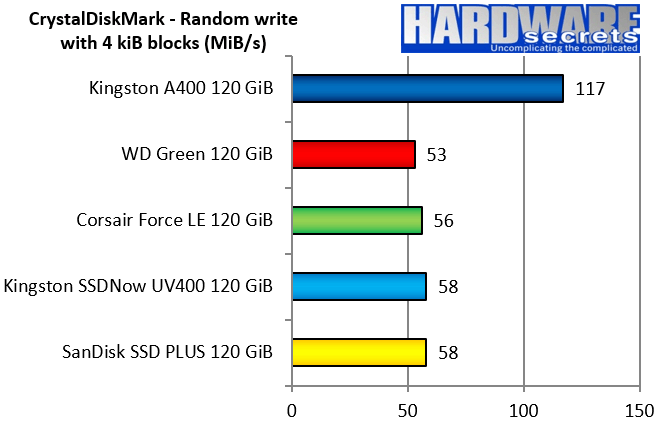
On the random write benchmark with 4 kiB blocks, the Kingston A400 was 121% faster than the WD Green, 109% faster than the Corsair Force LE, and 102% faster than the Kingston SSDNow UV400 and the SanDisk SSD Plus.
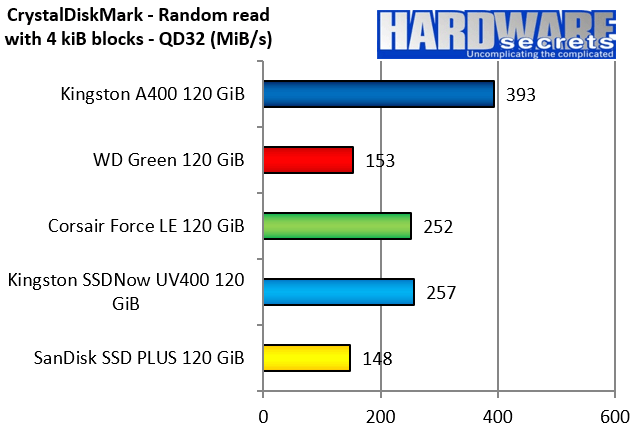
On the random read benchmark with 4 kiB blocks and queue depth of 32, the Kingston A400 was 157% faster than the WD Green, 56% faster than the Corsair Force LE, 53% faster than the Kingston SSDNow UV400, and 166% faster than the SanDisk SSD Plus.
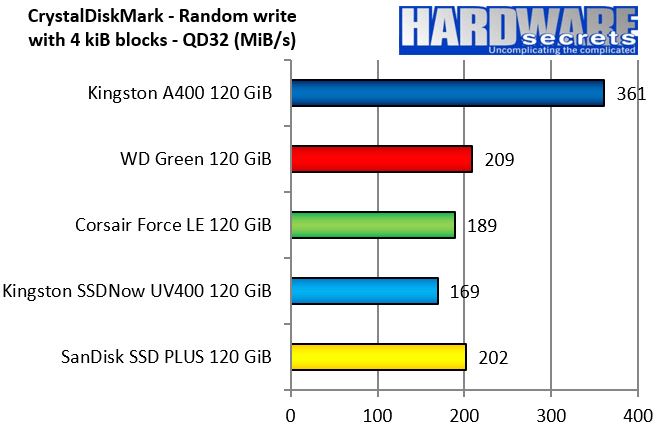
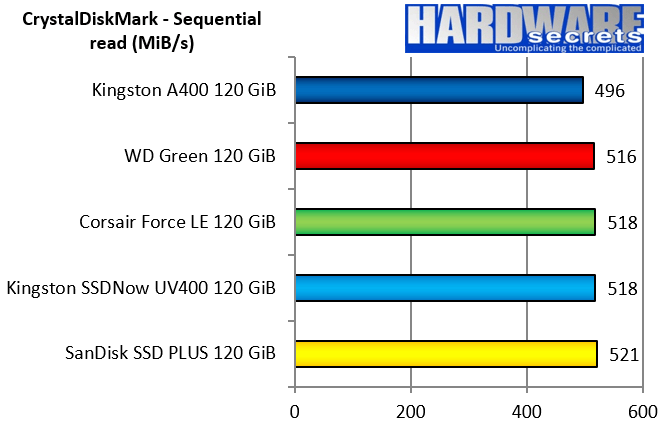
On the random write benchmark with 4 kiB blocks and queue depth of 32, the Kingston A400 was 72% faster than the WD Green, 91% faster than the Corsair Force LE, 114% faster than the Kingston SSDNow UV400, and 79% faster than the SanDisk SSD Plus.
For this test, we set CrystalDiskMark to the default mode, which uses incompressible data.
On the sequential read benchmark, all the SSDs has similar performance.
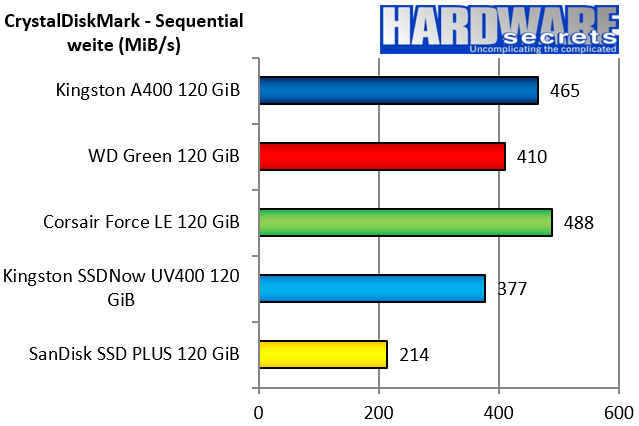
On the sequential write benchmark, the Kingston A400 was 13% faster than the WD Green, 5% slower than the Corsair Force LE, 23% faster than the Kingston SSDNow UV400, and 117% faster than the SanDisk SSD Plus.
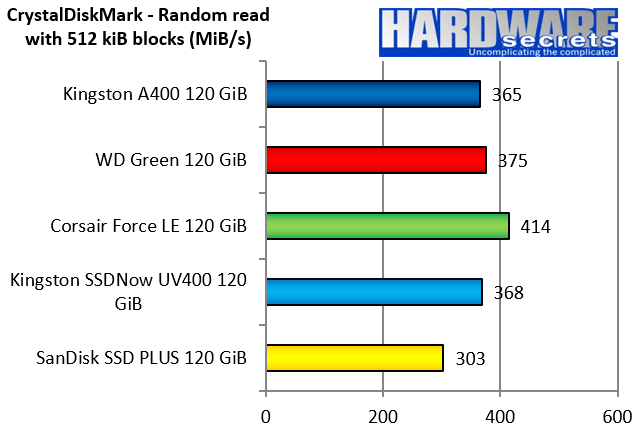
On the random read test with 512 kiB blocks, the Kingston A400 performed similarly to the WD Green and the UV400, being 12% slower than the Corsair Force LE, and 20% faster than the SanDisk SSD Plus.
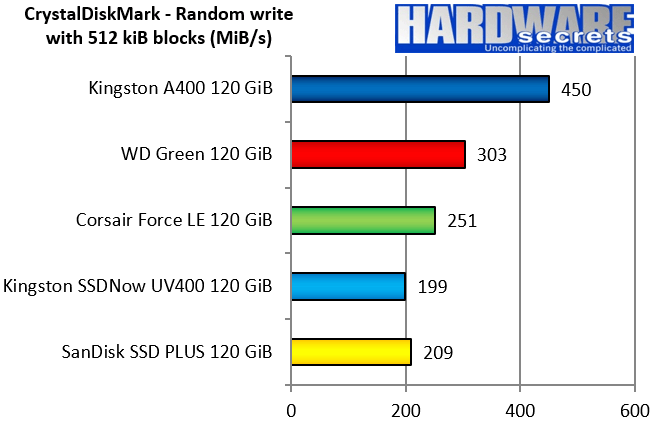
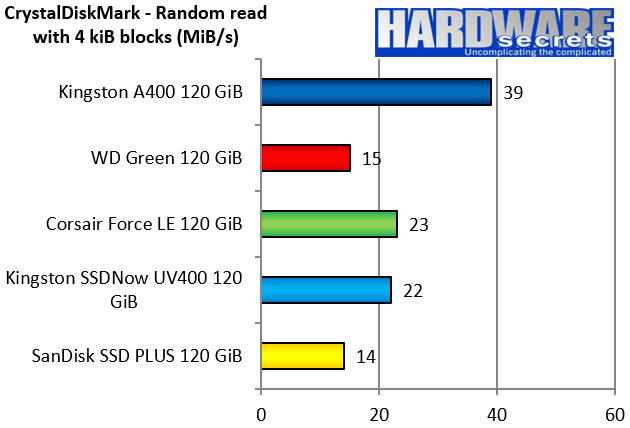
On the random write benchmark with 512 kiB blocks, the Kingston A400 was 49% faster than the WD Green, 79% faster than the Corsair Force LE, 116% faster than the Kingston SSDNow UV400, and 115% faster than the SanDisk SSD Plus.
On the random read benchmark with 4 kiB blocks, the Kingston A400 was 160% faster than the WD Green, 70% faster than the Corsair Force LE, 77% faster than the Kingston SSDNow UV400, and 179% faster than the SanDisk SSD Plus.
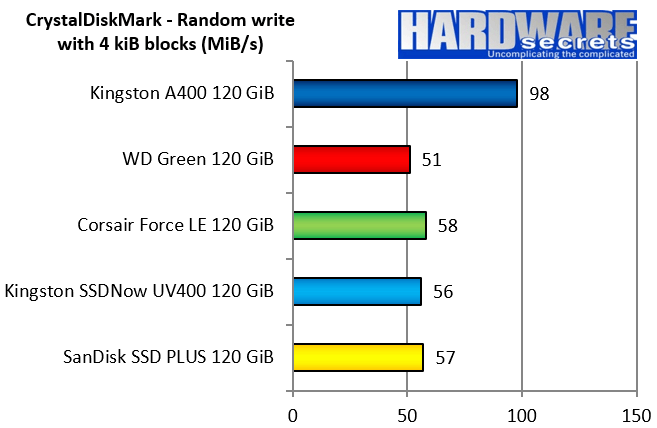
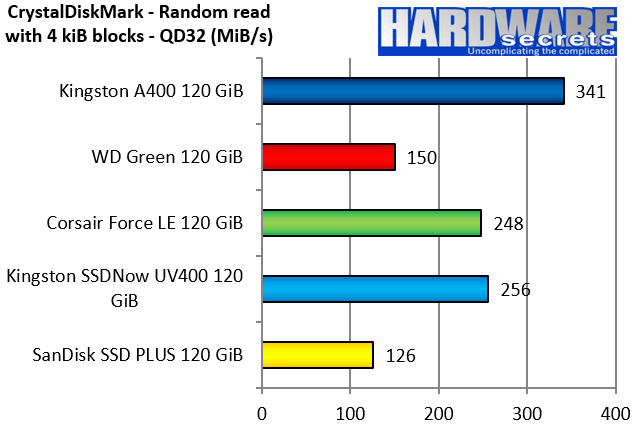
And on the random write benchmark with 4 kiB blocks, the Kingston A400 was 92% faster than the WD Green, 69% faster than the Corsair Force LE, 75% faster than the Kingston SSDNow UV400, and 72% faster than the SanDisk SSD Plus.
On the random read benchmark with 4 kiB blocks and queue depth of 32, the Kingston A400 was 128% faster than the WD Green, 38% faster than the Corsair Force LE, 33% faster than the Kingston SSDNow UV400, and 171% faster than the SanDisk SSD Plus.
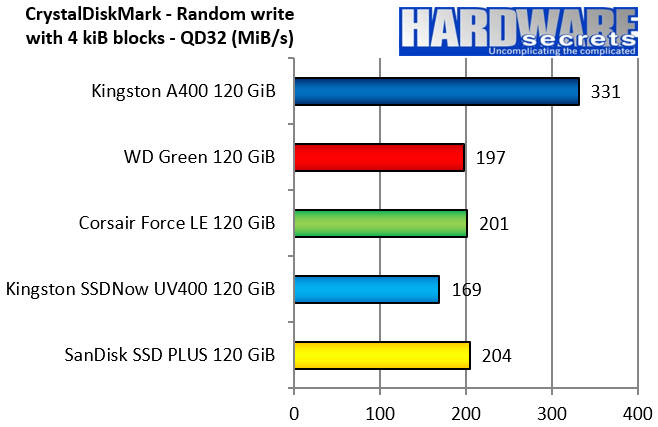
On the random write benchmark with 4 kiB blocks and queue depth of 32, the Kingston A400 was 68% faster than the WD Green, 65% faster than the Corsair Force LE, 96% faster than the Kingston SSDNow UV400, and 62% faster than the SanDisk SSD Plus.
Analyzing the data obtained on our tests, the first conclusion is that the Kingston A400 120 GiB is faster with compressible data than with uncompressible data, which means its controller uses compression to speed up operations.
Compared to its competitors, we see that it was similar on the sequential transfers, but faster in random accesses, mainly the ones with 4 kiB data blocks.
So, the A400 120 GiB is a great choice if you are looking for an inexpensive SSD to use as a boot drive in a desktop PC or laptop, replacing the UV400 model from the same manufacturer.
[amazon box=”B01N6JQS8C” template=”table”]

Leave a Reply